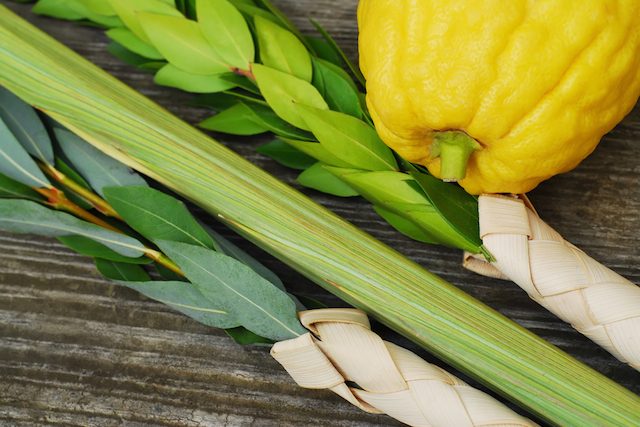 “Origin of (the Four) Species”
“Origin of (the Four) Species”
The Biblical origin is in the Book of Vayikra; specifically, in Parshat Emor, where the Torah commands “And you shall take for yourselves on the First Day the fruit of a beautiful tree, the branches of date palms, branches of the myrtle tree, and branches of the willow tree, and you shall rejoice before Hashem, your G-d, for Seven Days.” (Vayikra 23:40)
Symbolism of the Four Species
The Commandment is to take these four species together as a unit, and to shake them together in all directions, at various times on Sukkot.
One possible explanation is that we are taking these four elements from nature, and demonstrating that Hashem rules over nature everywhere and, by fulfilling this Command throughout the generations of our People, also at all times.
Two additional aspects of this “Group of Four” are as follows:
The “Etrog,” the Citron, resembles in its shape, the heart, the driving force behind all our actions. The “Lulav,” the Palm Branch, resembles the spine, which holds the body together and, without which, we would be unable to move. The “Hadasim,” the Myrtle Branches, resemble, in their almond-shape, the eyes, with which we behold G-d’s World. And the “Aravot,” the Willow Branches, resemble the lips, with which we give expression to our thoughts and feelings.
By holding these four together, we show that a person should devote all of his-or- her strengths and capacities to the Service of Hashem.
The “Etrog” has both a pleasant taste and a pleasant aroma, symbolizing one who possesses both the blessings of knowledge of Torah and of good deeds. The “Lulav,” the branch of a tree (the date palm) the fruit of which has good taste but no aroma, symbolizes the person who has Torah knowledge but not good deeds. The “Hadas,” the myrtle, which has pleasant aroma only, symbolizes the person who has good deeds but not Torah. And the “Aravah,” the willow branch, which has neither pleasant taste nor pleasant aroma, symbolizes the person who has neither Torah nor good deeds.
Holding these four in a tight bond represents the unity that is Hashem’s goal for the Jewish People. The bond represents the conversion of a set of separate individuals into a People, which is far greater than any individual in both the Crown of Torah and the Crown of Good Deeds, and is far more deserving than any individual of the blessings of Hashem.
The Stolen (!) Four Species
For each of the Four Species, the Mishnah in Masechet Sukkah compares the stolen article to its dried out and lifeless form, which is absolutely invalid. This is derived from a word in the Torah, and is also very understandable. It is derived from the word “yourselves” in the expression “And you shall take for yourselves the fruit of a beautiful tree, …,” implying that one’s ownership is required.”
But the explanation is to be found in the Talmud. The reason that the stolen “Lulav,” for example, cannot be used as part of the fulfillment of a Divine Command, is that it would then be a “Command performed By Means of a Sin,” which is self-contradictory! It is obvious that an Act would not be pleasing to Hashem, if it comes at the price of violation of one of His Own Commands.